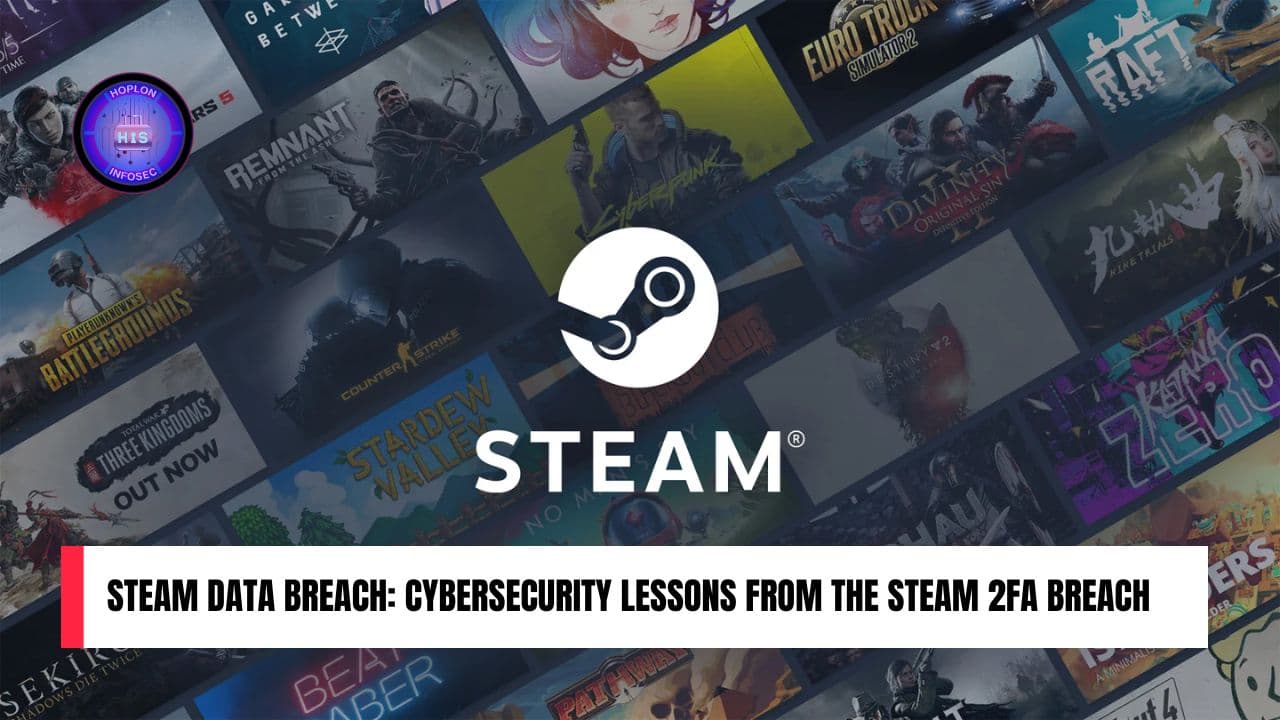Steam Data Breach: Cybersecurity Lessons from the Steam 2FA Breach

Hoplon InfoSec
14 May, 2025
The recent claim involving the leak of over 89 million Steam Data Breach with two-factor authentication (2FA) codes has raised serious cybersecurity concerns. With cybercriminals reportedly selling phone numbers and one-time passcodes on the dark web, this case underscores the importance of digital identity protection and robust authentication systems. It also serves as a real-world example of how interconnected services can become vulnerable, even if the primary service provider, like Valve, is not directly compromised.
How did the alleged Steam Data Breach occur?

A known hacker using the alias EnergyWeaponUser is allegedly selling a database on underground forums that contains 89 million records tied to Steam’s 2FA system. These records reportedly include phone numbers and historic one-time passcodes (OTPs). Though Valve (Steam’s parent company) has not confirmed any breach, cybersecurity watchdogs closely monitor the situation. The data is sold for $5,000, sparking fears of credential stuffing, phishing, and account hijacking.
Who is the Man Behind EnergyWeaponUser?
EnergyWeaponUser is a known figure in the cybercrime community and has been previously linked to high-profile breaches involving companies like Cisco, Ford, and Hewlett-Packard Enterprise. Their reputation lends some credibility to the claims, even though the origin of the data has not been officially confirmed.
Possible Sources of the Steam Data Breach
Some cybersecurity researchers suspect that the data may have originated from Twilio, a company that offers messaging services for 2FA systems. Twilio has strongly denied being breached, suggesting the possibility that a different intermediary SMS service provider could be the actual victim. This situation highlights the risk of supply chain attacks, where attackers compromise less-secure third-party vendors. But the question is…
What has Steam done to address the potential data breach?

So far, Valve has not issued any public statements confirming or denying the breach. However, users have been advised to enable the Steam Guard Mobile Authenticator and stay vigilant about unusual account activity. In cybersecurity, timely and transparent communication from affected companies is critical to reduce panic and guide users on appropriate actions.
Tips for individual users to secure their accounts better
One of the key takeaways is the risk associated with using SMS-based 2FA. Users are encouraged to switch to app-based authentication methods like Google Authenticator or Authy. Regularly monitoring login activity and updating passwords are also crucial steps in maintaining account security.
Did the incident not teach us about the modern cybersecurity risks?
This case illustrates the growing threat of data exposure even when core systems remain uncompromised. Third-party service providers, if not adequately secured, can become gateways for attackers. It also highlights the need for companies to conduct regular cybersecurity audits across their entire service chain.
Some Practical steps that users can take to protect themselves today
- Switch from SMS to app-based 2FA methods.
- Use strong, unique passwords for each account.
- Enable login alerts and account recovery options.
- Regularly review active sessions and revoke suspicious logins.
What should we avoid and be conscious of to stay protected from similar threats?
- Avoid using SMS for 2FA when better alternatives exist.
- Be Conscious Of: Third-party apps and services with access to your sensitive data.
- Practice: Regular password changes and audit your digital footprint.
- Stay Updated: Follow reliable cybersecurity news sources to stay informed about threats. Take consultancy if needed.
Some Cybersecurity Terms That You should Learn for future concern:
- Zero Trust Security Model: An approach that assumes no implicit trust and requires verification at every step.
- Digital Hygiene: Regular practices to maintain good cybersecurity habits.
- Multi-Factor Authentication (MFA): A layered approach that uses multiple credentials.
- Phishing Protection: Measures to avoid deceptive attempts to steal credentials.
- Credential Theft: The unauthorized acquisition of usernames and passwords.
- Account Hijacking: Unauthorized access and control over a user’s digital account.
- Incident Response: The approach taken by an organization to manage and mitigate a security breach.
- Authentication App: A mobile app that generates 2FA codes without relying on SMS.
- 2FA (Two-Factor Authentication): A security method that requires two separate forms of identification.
- Dark Web: A hidden part of the internet where illicit activities, including data sales, often occur.
- OTP (One-Time Passcode): A temporary password valid for only one login session.
- Threat Actor: An individual or group involved in malicious cyber activities.
- Reputation Score: A qualitative measure used in dark web forums to assess the credibility of sellers.
- Supply Chain Attack: A cyberattack targeting a third-party vendor to compromise a larger organization.
- Intermediary Provider: A service that acts as a middleman in delivering services, such as SMS for 2FA.
To wrap it up
This incident whether confirmed or not offers critical cybersecurity lessons. Always assume that no service is 100% safe and take proactive steps to secure your digital life. Companies must enhance transparency and strengthen their supply chain security to prevent such allegations. Stay alert, stay secure.
Share this :